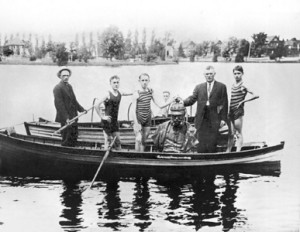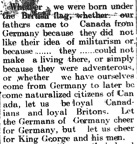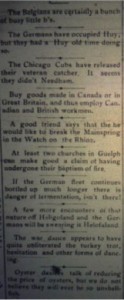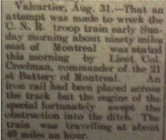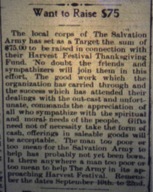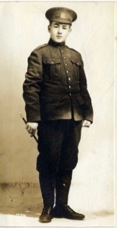As the month of August progressed, stories of German atrocities were relayed to Canadians. A number of Belgian towns and villages had been destroyed. Thousands of Belgians had died in the struggle to protect their country from the Germans, who had violated their neutrality in early August, during the Siege of Liege from 4 to 16 August. By mid August the Germans were said to be occupying Brussels, and the Belgian government was now operating out of Antwerp as a result. Switzerland too was beginning to suffer as well, specifically their food supply, despite their neutrality.
The Germans then began advancing to the French border . The French were holding their own against the attacks, aided by the British Expeditionary Force, who had just landed in France. The British Forces were lead by General John French, who was received warmly in Paris. The Russians were making their way towards the eastern German border as quickly as possible. There was however no definitive news on the movements of the British and German Navies. Overall it was evident that the war was quickly escalating by the end of August. Back in Canada, the First Contingent was still being trained, and it was announced that a Second Contingent would be raised.
(“Big Force on Move,” Waterloo Chronicle Telegraph, 13 August 1914; “German Army is Advancing through Heart of Belgium,” Waterloo Chronicle Telegraph, 13 August 1914;“War News From Europe,” Elmira Signet, 13 August 1914; “King Albert of Belgium. His Stand Against Germany Forced Britain to Intervene,” Ayr News, 20 August 1914; “War News,” Elmira Signet, 20 August 1914; “Bombard Unfortified City,” Ayr News, 27 August 1914; “Fled Before the Germans,” Ayr News, 27 August 1914; “Latest Reports Say Allies Are Holding Enemy,” Elmira Signet, 27 August 1914.)
